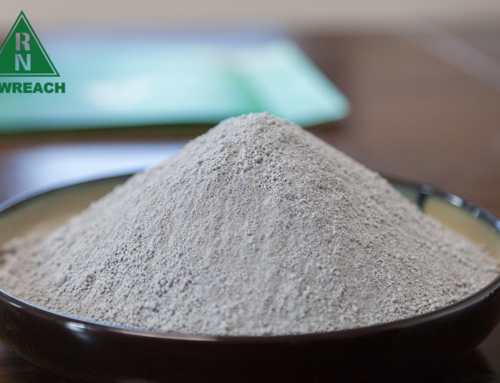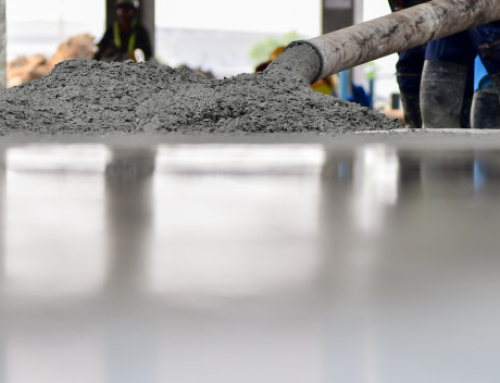shotcrete mix design is divided into wet mix and gunite to dry mix.This article focuses on the target mix design of shotcrete. The bulk density of wet sprayed concrete can be 2200-2300 kg/m 3, The weight ratio of cement to sandstone is preferably 1. 0: 3. 5 to 1. 0: 4. 0, the water-cement ratio is preferably 0.42 to 0.50, and the sand ratio is preferably 50% to 60%. After the mixture for wet spraying is mixed, the slump should be measured, and the slump should be 8 to 12 cm.
1.Selection of raw materials
Cement

Portland cement or ordinary Portland cement should be preferred.
Aggregate
The coarse aggregate should be made of hard and durable gravel or pebbles. The particle size should not be more than 16mm, the aggregate grade should be continuous grading, the fine aggregate should be hard and durable medium sand or coarse sand, the fineness modulus should be greater than 2. 5, the water content should be controlled at 5% ~ 7 %.
Accelerator
The appropriate accelerator should be selected according to the cement type, water-cement ratio, etc., and the initial setting should not exceed 5 minutes, and the final setting should not exceed 10 minutes.
Water
Concrete water should meet the relevant standards for engineering water, and water should not contain harmful substances that affect the normal condensation and hardening of cement. Do not use sewage and acid water with a pH less than 4 and the amount of sulfate. This ratio is based on domestic water.
2. Basic requirements for shotcrete mix design
Shotcrete should generally meet the following aspects:
(1) The shotcrete mix design should meet the design strength grade requirements. If there is impermeability requirement, the impermeability mark should also be achieved;
(2) less rebound;
(3) less dust;
(4) Good adhesion, compact shotcrete;
Can meet the construction requirements, smooth feeding, no blockage.
3. Shotcrete mix design
The parameters include cement dosage, gray bone ratio, sand ratio, water-cement ratio, and slump.
Cement dosage
The amount of cement used to control the amount of cement should be controlled at 400 ~ 450kg / m3. If the amount of cement is too small, the amount of rebound is large, and the initial strength increases slowly. When the amount of cement increases, the strength of shotcrete will increase and the rebound will decrease. However, the excessive use of cement is uneconomical. Secondly, the dust generated during construction increases, the construction environment is deteriorated, and the shrinkage of the concrete is also increased when it is hardened by condensation.
Gray to bone ratio
The ratio of cement to aggregate should be different according to the construction process. When dry spraying is adopted, the weight ratio of cement to sand and stone should be 1:4 -1:4.5. When wet spraying is applied, the weight ratio of cement to sand and stone should be 1:3.5~1:4.0.
Sand ratio
The sand rate should be controlled at 50% to 60%. The practice has proved that the sand rate affects both the construction performance of the shotcrete and its mechanical properties. When the sand rate is lower than 50%, the rebound rate is high, the pipeline should be blocked, and the strength of the shotcrete is highly discrete. When the sand ratio is too large, higher than 60%, the strength of the shotcrete is reduced due to insufficient coarse aggregate. To achieve the corresponding slump and fluidity, the amount of cement should be increased, and neither the economy nor the concrete shrinkage will increase.
Water to cement ratio
The ratio of the water-cement ratio of the wet-spraying construction is from 0.42 to 0.50. The size of the water-cement ratio affects the rebound rate and strength of the shotcrete. If the water-cement ratio is too large, the rebound rate can be reduced, but the strength is reduced; the water-cement ratio is too small, although the strength is high, the rebound rate is also increased. When the surface of the sprayed concrete is flowing, slipping or cracking, it indicates that the water-cement ratio is too large, and it is necessary to reduce the amount of water added; if there are dry spots on the surface, dust in the operation is large, and the amount of rebound is large, the water-cement ratio is too small. It is necessary to increase the amount of water in time; when the surface is flat, shiny, shiny, with less dust and rebound, it indicates that the water-cement ratio is suitable.
Slump
The slump is an important indicator for evaluating concrete fluidity, cohesiveness and water retention. When wet spraying is applied, the slump is 8 to 12 cm. Practice has proved that the slump has the lowest rebound rate of shotcrete in this range.
Selection of concrete mix ratio
The shotcrete mix ratio is generally determined by a combination of empirical formulas and construction techniques.
Spray concrete mix design method
The shotcrete mix design should include the conventional mix design and shotcrete field test spray, adjustment two parts. The former part is based on the requirements of shotcrete, and the reference ratio is proposed according to the conventional mix design of concrete. The latter part is based on the reference ratio and adjusts, verifies and determines the mix ratio on site. The two steps complement each other and are indispensable.
| Grades of Concrete | Ratios of Concrete mix design (Cement: Sand: Aggregate) |
| M5 | 1:5:10 |
| M7.5 | 1:4:8 |
| M10 | 1:3:6 |
| M15 | 1:2:4 |
| M20 | 1:1.5:3 |
| M25 | 1:1:2 |
| M30 | 1:0.75:1.5 |
| M35 | 1:0.5:1 |
| M40 | 1:0.25:0.5 |






